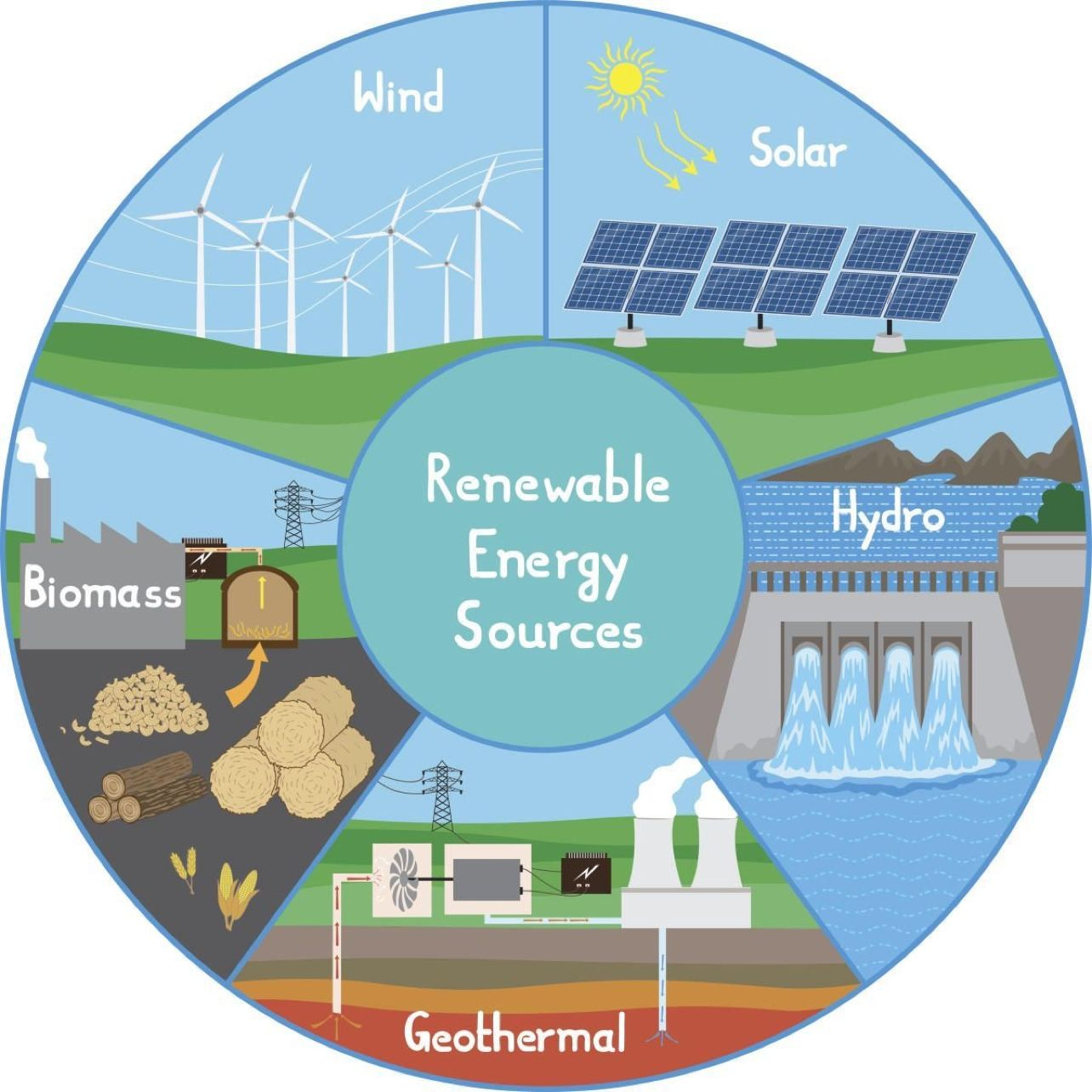RENEWABLE ENERGY: The Future of Energy Generation.
The world's demand for energy is growing rapidly, and it is critical that we find new and sustainable ways to meet this demand. Renewable energy sources, such as solar, wind, hydro, geothermal and bioenergy, provide a solution to the current dependency on finite and polluting fossil fuels.
These sources are renewable and emit little to no greenhouse gases, making them a key component in mitigating the effects of climate change.
1. #Solarenergy is the most abundant source of renewable energy and is a fast-growing industry. With advances in technology, solar panels are becoming more affordable and accessible, allowing for increased use in residential and commercial applications.
2. #Windenergy is another growing renewable energy source. Large wind turbines can generate significant amounts of electricity, and wind farms are being built in locations with strong and consistent wind patterns. Offshore wind farms have the potential to generate even more electricity, as wind speeds are typically stronger over the ocean.
3. #Hydropower harnesses the energy of falling water to generate electricity. Hydroelectric dams are a well-established form of renewable energy and can provide reliable, large-scale electricity generation.
4. #Geothermalenergy harnesses the heat from the Earth's core to generate electricity. Geothermal power plants use heat to create steam, which drives a turbine and generates electricity. Geothermal power is a highly reliable source of renewable energy, as the heat source is constantly available.
5. #Bioenergy is a type of renewable energy that is generated from organic matter, also known as biomass. Biomass includes materials such as wood, agricultural waste, and organic waste from landfills. Bioenergy can be produced through several methods, including the combustion of solid biomass to generate heat or steam, the conversion of biomass into liquid biofuels such as ethanol or biodiesel, and the generation of electricity through biomass gasification or anaerobic digestion.
Bioenergy can also have a lower carbon footprint compared to traditional energy sources, as the carbon dioxide emitted during combustion is part of the natural carbon cycle and is reabsorbed as the biomass grows. However, the overall environmental impact of bioenergy can vary depending on the type of biomass used and the method of production.
Conclusion
The transition to renewable energy, reducing emissions through energy efficiency, and promoting sustainable practices are all crucial steps in creating a sustainable future. It is up to all of us to do our part to reduce our impact on the environment and protect it for future generations. With the right actions, we can create a more sustainable world for all.






